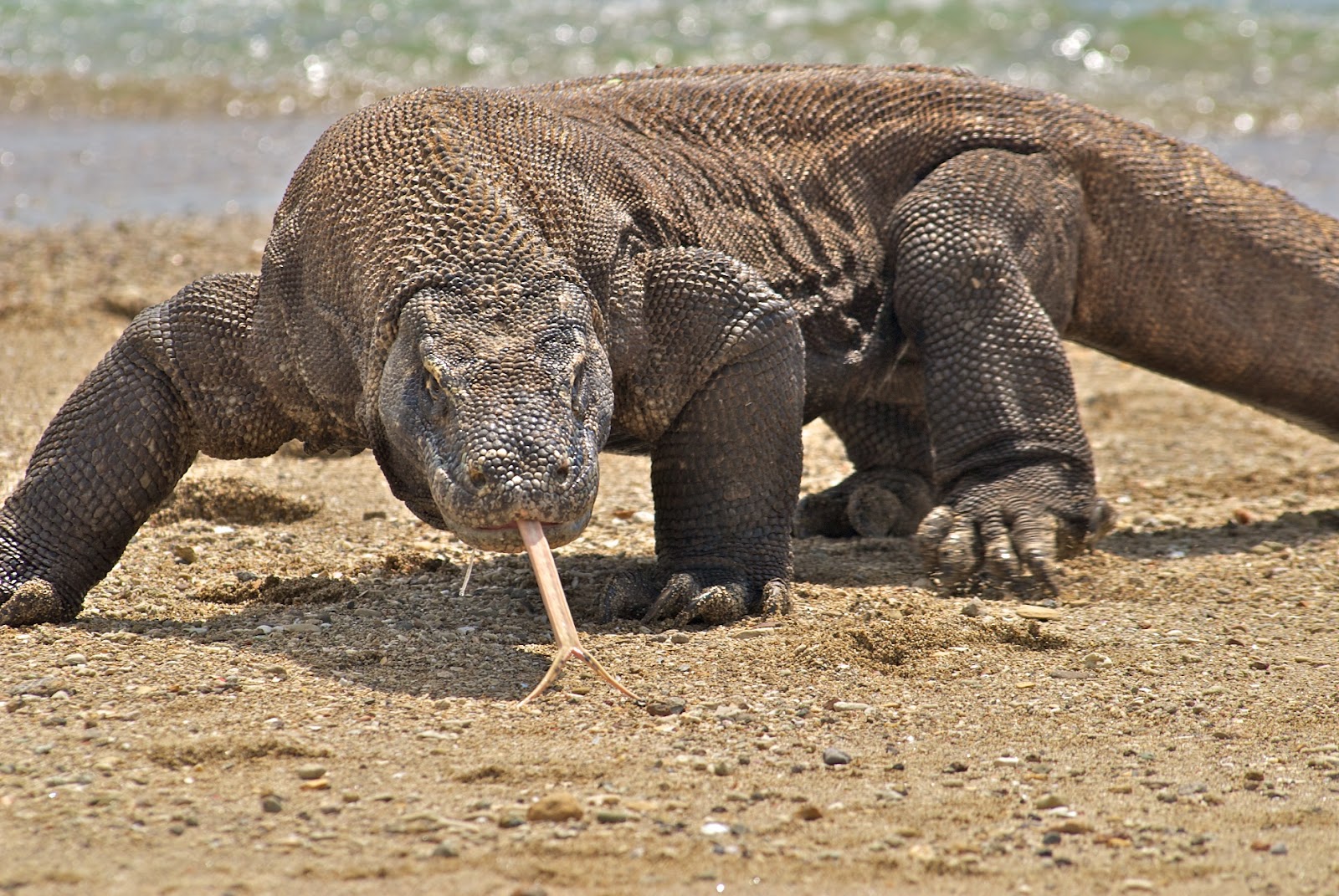The komodo dragon is a renowned giant with the average male measuring around 8 feet long some exceptional individuals reach 10 feet long

The Komodo Dragon: A Renowned Giant

The Komodo dragon, scientifically known as Varanus komodoensis, is a truly remarkable creature. It is native to the Indonesian islands of Komodo, Rinca, Flores, Gili Motang, and Padar, where it dominates the local ecosystem. With its powerful build, razor-sharp claws, and a venomous bite, the Komodo dragon is indeed a force to be reckoned with. This article delves into one of the most intriguing facts about this reptile - its gigantic size.
A Giant Among Reptiles

The Komodo dragon is the largest living lizard on our planet. With its awe-inspiring size, it captivates both scientists and wildlife enthusiasts alike. Adult males, in particular, are known to reach astonishing lengths, making them true giants. On average, male Komodo dragons measure around 8 feet in length, from snout to tail. However, some exceptional individuals have been documented to exceed this average, measuring an astonishing 10 feet long.
The Marvel of Adaptation
The sheer size of adult male Komodo dragons highlights the remarkable evolutionary adaptations that have allowed this species to thrive. Their elongated heads, powerful muscles, and sharp serrated teeth are perfectly designed for their carnivorous lifestyle. These magnificent creatures primarily feed on a diet of carrion, but they are also highly skilled hunters. With their strong legs and muscular tails, they can reach impressive speeds and ambush unsuspecting prey with precision.
A Formidable Predator
Komodo dragons are renowned for their ability to take down large prey. They are apex predators in their natural habitat and utilize various techniques to capture and subdue their targets. The incredible power of their bite, combined with venomous saliva, ensures a swift and efficient takedown of their victims. Once the prey is immobilized, the Komodo dragon will patiently wait until it succumbs to the potent venom, allowing the dragon to feast on its prize.
Conservation Efforts
Despite their fearsome reputation, Komodo dragons are a vulnerable species. Threats such as habitat loss, poaching, and climate change jeopardize their survival. Recognizing the importance of conserving these iconic creatures, efforts are being made to protect their native habitats and raise awareness about their plight. Visitors to the Komodo National Park, a UNESCO World Heritage Site, can witness these incredible reptiles in their natural environment and contribute to their preservation.
In conclusion, the Komodo dragon’s immense size adds to its allure, making it a subject of fascination for many. Its ability to grow up to 10 feet in length showcases the extraordinary wonders of nature. By understanding and appreciating these captivating reptiles, we can play a role in ensuring their continued existence for generations to come.
Source: ThoughtCo
Tags
Share
Table Of Contents
Related Posts
Quick Links
Legal Stuff

